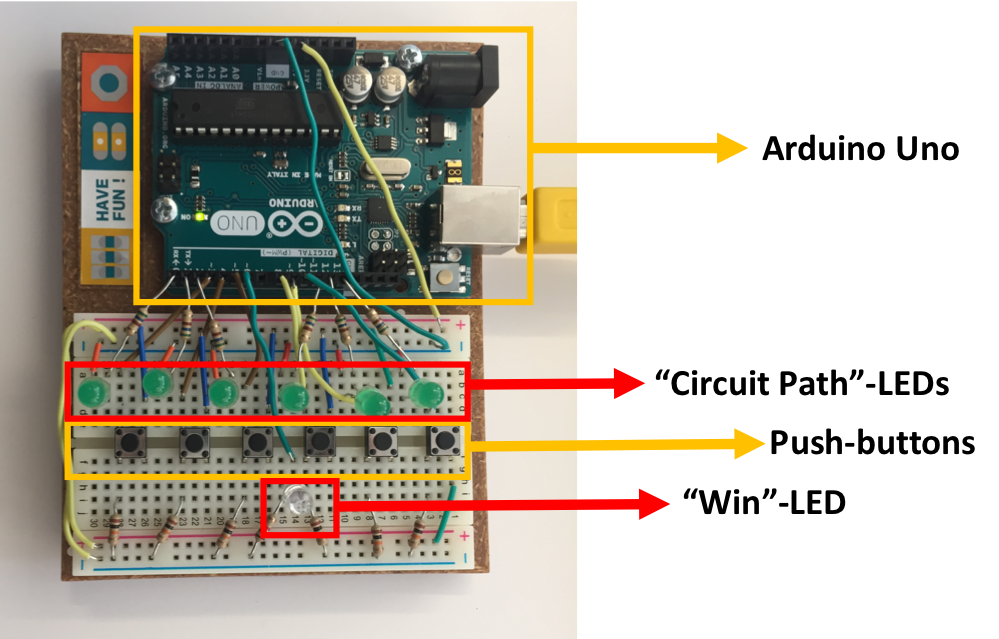Design
The platform itself consists of an Arduino Uno which is a microcontroller board that allows the user to develop stand-alone interactive systems controlled via programs in the integrated microcontroller. To follow the function of the gameplay, the model implements a series of push-buttons (representative of the buttons throughout the game room) which activate a specific green LED (representative of a specific and individual section of a circuit path throughout the room). Finally, the model also implements a "win" LED which is only activated when the right combination of "circuit paths" (LEDs) are activated. For the actual room, the "win" LED could be placed either at the exit door or in a "core" prop in the center of the room and the correct circuit path would lead to this location.


Since the actual circuit set-up, lacks visual references to intuitively understand the gameplay. A schematic outline of "circuit paths" was placed over the actual breadboard circuit with the purpose of adding visual reference to the inner workings of the model. This schematic diagram depicts the "circuit paths" (green LEDs) that need to be activated to win the gameplay. Also, the model and the diagram includes some "dead-ends" circuit paths to provide more complexity and difficulty in the gameplay. For representative purposes, the dead-ends were clearly mark but in the actual game they would be disguised throughout the room and players would need to figure out which circuit paths are actually leading to the correct, completed circuit.